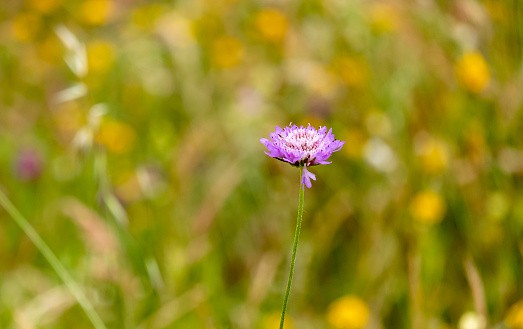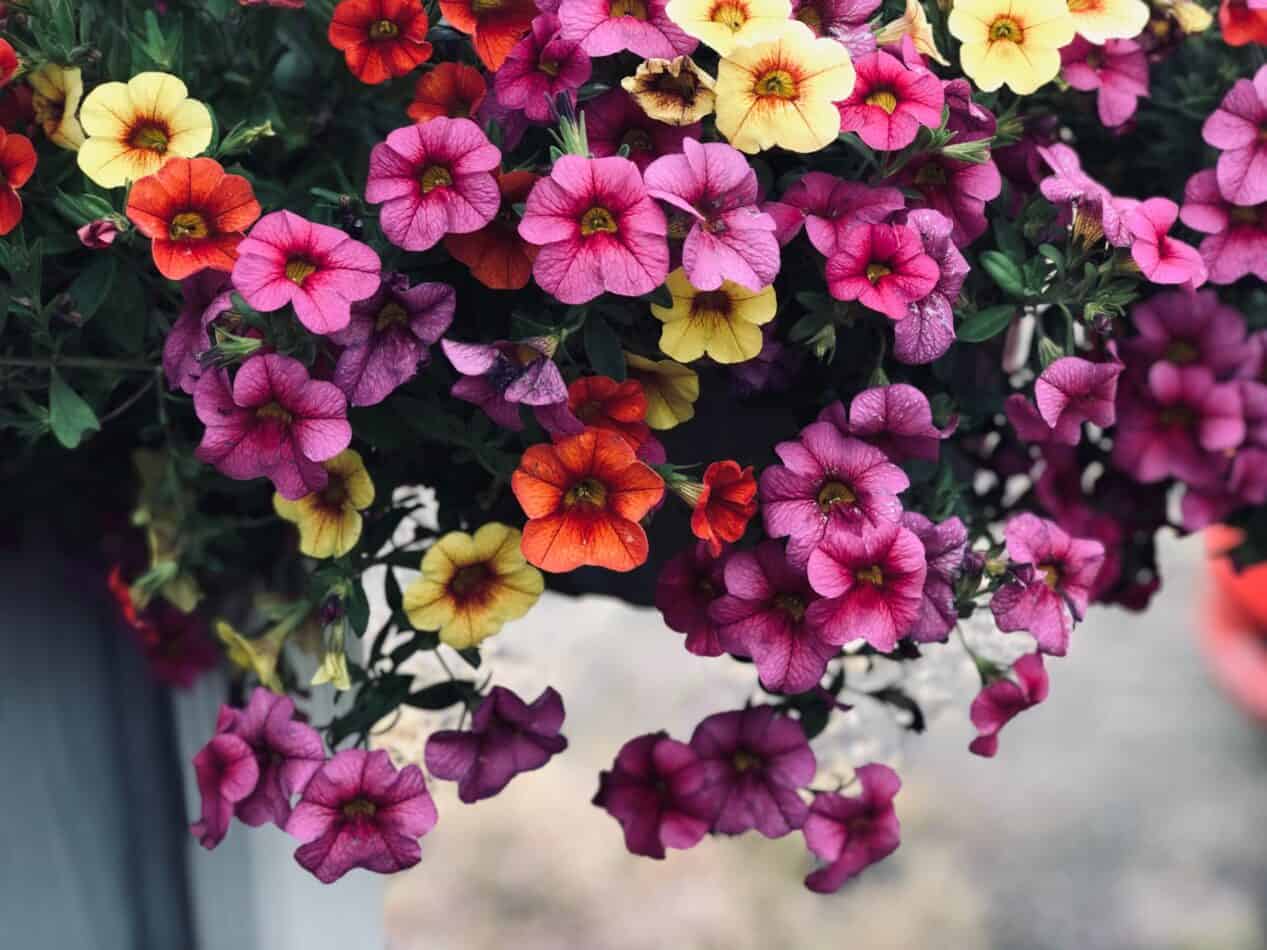The Pincushion Flower, scientifically known as Scabiosa Atropurpurea, is an annual or short-lived bushy perennial that produces intensely colored pincushion-like blooms. The flowers are burgundy in color, with feathery petals on the outside, deepening in color nearer the center. They measure two inches across and bloom from spring to fall.
The genus name ‘Scabiosa’ is derived from Latin, meaning “scabby”, referring to the rough or scaly leaves and stems of many species in the genus. The species name ‘Atropurpurea’, on the other hand, refers to the intense dark purple colour of the flower petals.
How To Plant
Pincushion Flowers thrive in a sunny location that is well-drained, with a slightly acidic soil. Although they can tolerate some shade, they prefer a location in full sun. When potting it is important to choose a large enough container, as they can get quite large. It’s also important to select a pot with good drainage holes. When planting in the garden well-draining soil is essential, otherwise the plant may suffer from root rot. In terms of water, it is important to keep the soil moist without over-watering as this could lead to root problems. This flower does best in temperatures ranging from 45 to 75 degrees Fahrenheit. In terms of humidity, it prefers humid environments in order for the flowers to stay vibrant and healthy.
Meaning And Symbolism
In additional to its colorful blooms, Pincushion Flowers also have a deep symbolic meaning. To many people, the flowers represent long lasting friendships, humility, and gratitude. This is due to the fact that its sturdy stems often stand up straight and tall, symbolizing strong and resilient relationships. The burgundy tones of the petals have also been be seen as a sign of passionate love, often being associated with feelings of romance and affection.
History, Mythology, And Religious Significance
The Pincushion Flower is an ancient flower with its roots in both mythology and religion. In Greek mythology, the flower was seen as a symbol of hope, depicting a beauty that had washed ashore from the sea. In the Christian faith, some biblical experts have suggested that the flower carries symbolic meanings of mercy, humility, and gratitude, linking it to the character of Jesus.
Flower Varieties And Their Defining Characteristics
The Pincushion Flower is one of the most popular varieties of Scabiosa Atropurpurea. This variety is known for its burgundy-colored blooms, soft petals, and feathery exterior. Other popular varieties of Scabiosa Atropurpurea include the ‘Pink Mist’ and ‘Ivory Queen’, both of which have white and rose-colored blooms.
How To Pot And Repot
Potting and repotting Pincushion Flowers is a relatively straightforward process. When potting in the spring, it is important to use a pot with good drainage holes so that water can escape and the soil does not become waterlogged. Whereas when repotting, it is important to wait until the end of winter when the soil is warm enough for the roots to spread. When repotting, it is best to add about two inches of new soil, as this will provide the flower with the necessary nutrients to grow and flower.
How To Prune
The Pincushion Flower is a bushy, full plant that requires regular pruning in order to maintain its desired shape. To prune, start by removing any dead or damaged stems, followed by trimming off any stems that appear too long. When completing the pruning, it is important to use sharp, sanitized shears to avoid any accidental damage to the stems. Pruning should be done every eight weeks in order to keep the plant looking its best.
How To Propagate
Propagating the Pincushion Flower can be done through division, which is the process of splitting up existing clusters of plants. To divide the plant, use a sharp, sterilized spade to remove the root ball from the ground. This should be done in early to mid-spring, when the soil is easy to work with. Once the roots have been divided, gently dig up the new divisions and carefully replant them. Make sure to water the new divisions well for the first few weeks.
Common Pests And Diseases
Though the Pincushion Flower is generally a healthy and hardy flower, it is still susceptible to certain pests and diseases. Common pests that can affect the plant include aphids, thrips, and caterpillars. To control these pests, it is important to keep a watchful eye on the plant and take proactive measures such as hosing down the plant with a stream of water or using insecticidal soap. Common diseases that can affect the Pincushion Flower include root rot, powdery mildew, and rust. To prevent these diseases it is important to ensure that the soil does not become waterlogged, as this is a breeding ground for disease.
Frequently Asked Questions
- What Is The Best Time To Plant Pincushion Flower?
The best time to plant Pincushion Flower is in early spring or late fall, when the soil is warm enough for the roots to take hold. - How Can I Get More Flowers From My Pincushion Flower?
Regular pruning and deadheading will help to increase the number of flowers that the Pincushion Flower produces. - How Can I Propagate Pincushion Flower?
Pincushion Flower can be propagated through division, which is the process of splitting up existing clusters of plants. To divide the plant, use a sharp, sterilized spade to remove the root ball from the ground.
Table Fact Sheet
| Name | Pincushion Flower – Scabiosa Atropurpurea |
|---|---|
| Family | Dipsacaceae |
| Plant Type | Annual or short-lived bushy perennial |
| Mature Size | Up to 3 feet tall and wide |
| Sun Exposure | Prefers full sun but can tolerate some shade |
| Soil Type | Well-drained, slightly acidic |
| Soil pH | 6.2 – 6.8 |
| Bloom Time | Spring to Fall |
| Flower Color | Burgundy |
| Hardiness Zones | 4 – 11 |
| Native Area | Europe, Asia, and North Africa |
What we love from Amazon this week
Buy these wonderful flowers directly from Amazon:












